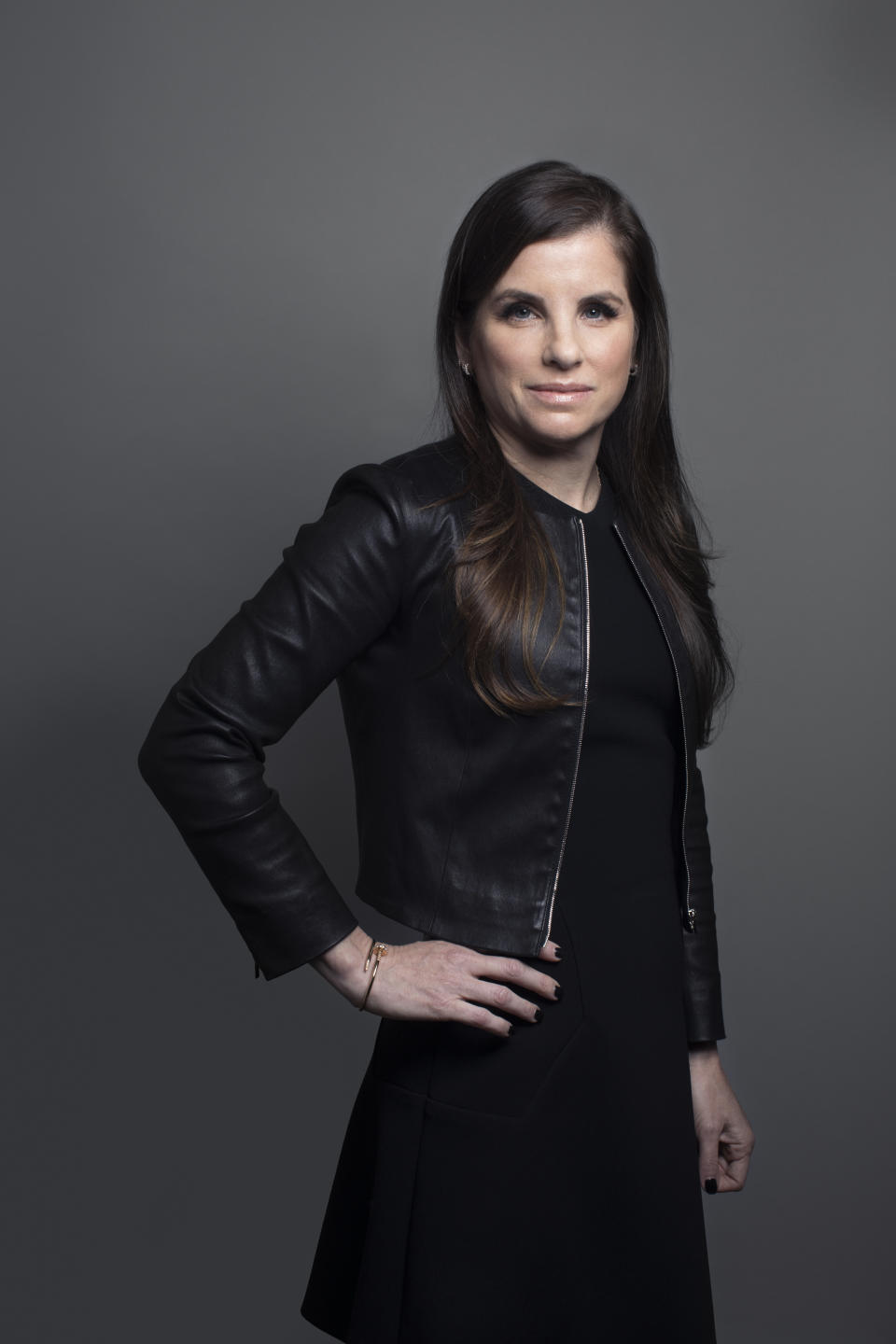Inside Revlon’s Downward Spiral

The National Association of Chain Drug Stores’ annual meeting brings together the industry’s largest mass market brands and retailers, and for years, Revlon was the life of the party.
The cosmetics giant was famous for its annual shindigs, with superstars like Sheryl Crow, Alicia Keys and Kenny Loggins among the headliners, sometimes joined by Revlon’s majority owner Ronald O. Perelman on drums.
More from WWD
Revlon’ ambassadors like Halle Berry, Ashley Graham, Emma Stone and Carrie Underwood were often there, posing for photos. One year, Cindy Crawford twirled on the dance floor with the teenage grandson of the chief executive officer of a big supermarket chain.
This year, the music stopped.
Not only was there no party, but Revlon reportedly wasn’t even in attendance at the 2022 NACDS annual meeting, held in late April in Palm Beach, Fla. (NACDS would not comment on its registration.)
Less than two months later, on June 16, after years of dodging bankruptcy, Revlon officially filed for Chapter 11, Perelman no longer able to drum up the funds needed to overcome the company’s $3.7 billion in debt and millions of dollars of interest charges. Revlon’s full year 2021 net interest expense clocked in at $247.7 million — a significant amount for a company that generated a little more than $2 billion in yearly sales, one financial expert said.

Jeff Riedel
While Revlon has cited macroeconomic factors like lingering supply chain issues, rising prices, the pandemic and a fast-evolving competitive landscape for its troubles, the unraveling of one of the mass market’s most legendary companies began a long time ago.
Many industry analysts lay the blame at the feet of Perelman, who gained control of the company in the mid-‘80s via a hostile takeover through his company MacAndrews & Forbes. Experts fault him more for his obsession with the brand and its image versus his understanding of running a beauty empire.
“Revlon is an interesting case study in what happens when you don’t know anything about the beauty industry, but it just seems so exciting and glamorous that you’ve got to get into it,” said one former mass market beauty buyer, who requested anonymity.
“Revlon has been trying to restructure its debt and struggling to stay relevant well before COVID-19 and the challenges introduced by supply chain disruption,” said Mathieu Champigny, CEO of CoCreativ, Smashbox Studios and Industrial Color, who has more than 20 years of experience in creating campaigns for beauty companies. “The heart of the matter is that Revlon needs to reinvent itself to engage consumers in a crowded market.”
It wasn’t always that way.
In the early 2000s, Revlon was the jewel of mass market beauty departments. Steve Lubin, who spent 43 years at Walgreens, credited the company with creating category blockbusters such as ColorStay long-wear makeup. “They were out front more than other brands for many years with what drives business — newness,” he said.
Even to this day, despite its business issues, the name is “still gold,” said Lubin; according to data from IRI, the ColorStay franchise ranks within the top three-dollar sellers in eyeliner, eyebrow makeup and foundation.
Retail veteran Joe Magnacca, who worked with Revlon through positions at Loblaw, Shoppers Drug Mart, Duane Reade and Walgreens, credited the company with “building a brand for everyone.”
But Revlon lost its step in the business it helped frame, according to interviews with former employees, retailers, financial experts and competitors. The biggest roadblock — a lack of innovation from a product pipeline adversely effected by frequent management changes.
Over the years, the dearth of meaningful products resulted in the reduction of shelf space by as much as 25 percent in major chains. And while many might point the finger at the proliferation of heightened competition from newer brands like Fenty, direct-to-consumer entries and celebrity brands, key competitors like Coty’s Cover Girl have successfully revamped their offerings and gained back lost shelf space and sales.
“They didn’t embrace change. It was predictable to see lagging consumer engagements, which leads to bad sales results. It isn’t a matter of engaging a pretty model for a campaign; you need to rebrand,” Champigny said. “If you go into a store today you are seeing the same ad you saw in the 1990s.”
A buyer who asked not to be identified said Revlon has been reactive rather than proactive in new product development. “It tells me they were constantly looking for a quick hit and not playing a long game in beauty.”
The problems were exacerbated by a revolving door of CEOs. Before Perelman’s daughter, Debra, was named to the post in 2018, the company had five leaders over the course of 12 years.

Celeste Sloman
“A new president would come in and bring in a new team. They would barely get going and then, when there weren’t any immediate results, that group would be kicked out and a new team would be brought in,” a former buyer said.
“This continual churn made for a very unproductive and ‘politically’ motivated decision strategy. The result of this is a reluctance to honestly assess concepts or decisions because you wanted to be perceived as getting along and working together. That doesn’t always help in the development of the best ideas,” she said.
Added a source familiar with Revlon, “Each CEO could never get ahead of it. They put a focus on ‘pushing’ products rather than a pull strategy. That drove revenue up, made the numbers look good but there wasn’t the sell-through.”
An example from 2006 illustrates the challenges that continue to plague Revlon. Under then-CEO Jack Stahl, Revlon launched Vital Radiance, a brand positioned for women aged 50-plus. After lukewarm sales, retailers jettisoned the brand, forcing Revlon’s to pay more than $40 million to take back products. David Kennedy pulled the plug on Vital Radiance one week after taking over as CEO in fall 2006.
More recently, there was Flesh, spearheaded by Allure’s founding editor Linda Wells, which missed the mark in 2018 because Revlon wasn’t nimble enough to get its answer to Fenty out fast enough, buyers said.
The constant churn opened the door for L’Oréal to gain share, said industry expert Allan Mottus, whose new book, “Fashion Paranoia: Down & Up Beauty’s Rabbit Hole,” discusses Revlon’s history. “The only person who could run Revlon was Charles,” he said, about company founder Charles Revson.
Today, L’Oréal Paris and Maybelline New York are the largest mass makeup brands in the world.
In addition to being slow to market, Revlon converted to SAP [a software designed to foster efficiencies] in 2018 — a disaster retailers said set the company back at least a year. “In the meantime, more space was cut by retailers because of Revlon’s inability to fill orders,” said a former drugstore senior buyer.
There were squandered opportunities. One was backing away from fragrances, where Revlon didn’t build upon profit producers like Charlie. Another was the mishandling of Almay, which one analyst said could have been the “Clinique of the mass market.”
“Almay was way ahead of its time. It was the first brand using hypoallergenic ingredients and certainly the first dermatologist brand. It could have been a leader in the mass market if Revlon had the resources to invest properly,” said Jeffrey Ten, chief revenue officer at ProBeauty Partners. “There are so many derm brands today that came way after Almay that have a strong message and point of difference and Almay could have been one of those.”
Ten added that Revlon’s acquisitions — in particular the Elizabeth Arden deal in 2016 — took attention away from Almay and created lasting headaches.
“Revlon didn’t seem to understand what they actually bought. Arden had a department store business and maybe the idea was that would round out the portfolio, but they didn’t seem to understand the majority of sales and profits were in the diversion fragrance business,” said a mass market retailer. “EA had an owned, distributed and diverted portfolio and nobody seemed to understand that concept.”
Mottus agreed, noting, “Buying Elizabeth Arden was a sign that Perelman didn’t understand the business as Arden was nothing more than a fragrance diverter.”
Moreover, with steeply declining mass market fragrance sales, the synergies with Revlon’s core business were lacking. “We were thinking ‘Why would they buy EA?’ The fragrance business was not performing, and many retailers were reducing the category,” said a former mass merchant.
More recently, the company has been faulted for mishandling its nail care business, which caused it to lose out when that category roared back during COVID-19. “They made a terrible mistake in gutting out the nail enamel business, buying another brand [Sinful], and they did not understand how to integrate or even merge the two businesses. They weren’t positioned well when nail came back,” a buyer said.
Revlon also fumbled an opportunity in a hot category — hair tools on Amazon, according to Vanessa Kuykendall, chief operating officer of Market Defense. She said Revlon’s original One Step Volumizer Hot Air Brush was a top seller with a buzz on TikTok. Then Revlon expanded into multiple colors and took deep discounts.
“They trained the customer to shop on sale,” she said. “A savvy customer will wait until you take your $99 MRSP down to $25 or $34 once they see that you do it all the time. What’s the incentive to shop full price? It is a huge business for them on Amazon, but they devalued it by frequently discounting,” Kuykendall said.
Going forward, the future doesn’t look much brighter. In its bankruptcy filing, Revlon expressed interest in restructuring debt rather than selling, but major surgery is needed to stem the bleeding and the competitive landscape is fierce.
“Revlon is up against multinational beauty conglomerates who have deep pockets and deep benches who can run rings around Revlon. The mass makeup business has fewer opportunities as prestige is discounted and has moved into mass merchandisers and other stores taking share from mass brands,” said Mottus, who noted that the brand hasn’t captured a younger audience or retained its core shopper.
What can’t be discounted is the equity of the name, especially in smaller markets not served by Sephora and Ulta. “Revlon remains one of our best brands and is important to our business,” said Troy Claussen, category manager at the Sioux Falls, S.D.-based Lewis Drugs.
But that may not be enough. Since the bankruptcy filing, Revlon’s stock price has been as volatile as its history, surging as retail investors bought up the stock. Meanwhile, the Indian conglomerate Reliance Industries is reportedly interested in acquiring the company.
Still, Debra Perelman is adamant that the company will recover and roar back stronger than ever. “Today’s filing will allow Revlon to offer our consumers the iconic products we’ve delivered for decades, while providing a clearer path for our future growth,” she said at the time of the filing. She noted that consumer demand for the company’s products remains strong, but that the company’s “challenging capital structure” has limited its ability to meet the demand.
“By addressing these complex legacy debt constraints, we expect to be able to simplify our capital structure and significantly reduce our debt,” she said, “enabling us to unlock the full potential of our globally recognized brands.”
But only time will tell if the Perelmans finally have the key.
Sign up for WWD's Newsletter. For the latest news, follow us on Twitter, Facebook, and Instagram.

